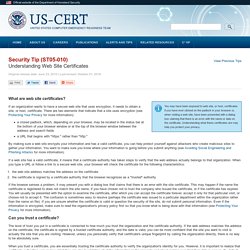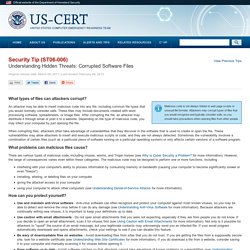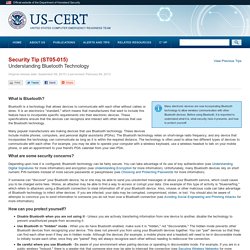

Why is Cyber Security a Problem? What is cyber security?

It seems that everything relies on computers and the internet now — communication (email, cellphones), entertainment (digital cable, mp3s), transportation (car engine systems, airplane navigation), shopping (online stores, credit cards), medicine (equipment, medical records), and the list goes on. Using Caution with USB Drives. What security risks are associated with USB drives?

Because USB drives, sometimes known as thumb drives, are small, readily available, inexpensive, and extremely portable, they are popular for storing and transporting files from one computer to another. However, these same characteristics make them appealing to attackers. One option is for attackers to use your USB drive to infect other computers. An attacker might infect a computer with malicious code, or malware, that can detect when a USB drive is plugged into a computer. The malware then downloads malicious code onto the drive. Some attackers have also targeted electronic devices directly, infecting items such as electronic picture frames and USB drives during production. Using Caution with Email Attachments. While email attachments are a popular and convenient way to send documents, they are also a common source of viruses.

Use caution when opening attachments, even if they appear to have been sent by someone you know. Why can email attachments be dangerous? Understanding Your Computer: Web Browsers. Web browsers allow you to navigate the internet.

There are a variety of options available, so you can choose the one that best suits your needs. How do web browsers work? A web browser is an application that finds and displays web pages. It coordinates communication between your computer and the web server where a particular website "lives. " When you open your browser and type in a web address (URL) for a website, the browser submits a request to the server, or servers, that provide the content for that page. Understanding Your Computer: Email Clients.
The main difference between email clients is the user interface.

Regardless of which software you decide to use, follow good security practices when reading or sending email. How do email clients work? Every email address has two basic parts: the user name and the domain name. Understanding Web Site Certificates. What are web site certificates?

If an organization wants to have a secure web site that uses encryption, it needs to obtain a site, or host, certificate. There are two elements that indicate that a site uses encryption (see Protecting Your Privacy for more information): a closed padlock, which, depending on your browser, may be located in the status bar at the bottom of your browser window or at the top of the browser window between the address and search fieldsa URL that begins with "https:" rather than "http:" Understanding ISPs. ISPs offer services like email and internet access.

Understanding Hidden Threats: Corrupted Software Files. Malicious code is not always hidden in web page scripts or unusual file formats.

Attackers may corrupt types of files that you would recognize and typically consider safe, so you should take precautions when opening files from other people. What types of files can attackers corrupt? An attacker may be able to insert malicious code into any file, including common file types that you would normally consider safe. These files may include documents created with word processing software, spreadsheets, or image files. Understanding Digital Signatures. Digital signatures are a way to verify that an email message is really from the person who supposedly sent it and that it hasn't been changed.

What is a digital signature? There are different types of digital signatures; this tip focuses on digital signatures for email messages. You may have received emails that have a block of letters and numbers at the bottom of the message. Although it may look like useless text or some kind of error, this information is actually a digital signature. Understanding Bluetooth Technology.
What is Bluetooth?

Bluetooth is a technology that allows devices to communicate with each other without cables or wires. Shopping Safely Online. Online shopping has become a popular way to purchase items without the hassles of traffic and crowds. Securing Wireless Networks. Wireless networks introduce additional security risks. If you have a wireless network, make sure to take appropriate precautions to protect your information. In today’s connected world, almost everyone has at least one internet-connected device. With the number of these devices on the rise, it is important to implement a security strategy to minimize their potential for exploitation (see Securing the Internet of Things).
Internet-connected devices may be used by nefarious entities to collect personal information, steal identities, compromise financial data, and silently listen to—or watch—users. Taking a few precautions in the configuration and use of your devices can help prevent this type of activity. Risks of File-Sharing Technology. File-sharing technology is a popular way for users to exchange, or "share," files. However, using this technology makes you susceptible to risks such as infection, attack, or exposure of personal information. What is file sharing? File sharing involves using technology that allows internet users to share files that are housed on their individual computers.
Peer-to-peer (P2P) applications, such as those used to share music files, are some of the most common forms of file-sharing technology. Reducing Spam. Spam is a common, and often frustrating, side effect to having an email account. Although you will probably not be able to eliminate it, there are ways to reduce it. What is spam? Spam is the electronic version of “junk mail.” The term spam refers to unsolicited, often unwanted, email messages. Spam does not necessarily contain viruses—valid messages from legitimate sources could fall into this category. How can you reduce the amount of spam? Recognizing Fake Antiviruses. What is fake antivirus?
Fake antivirus is malicious software (malware) designed to steal information from unsuspecting users by mimicking legitimate security software. The malware makes numerous system modifications making it extremely difficult to terminate unauthorized activities and remove the program. Recognizing and Avoiding Spyware. Because of its popularity, the internet has become an ideal target for advertising.
As a result, spyware, or adware, has become increasingly prevalent. When troubleshooting problems with your computer, you may discover that the source of the problem is spyware software that has been installed on your machine without your knowledge. Protecting Portable Devices: Physical Security. Many computer users, especially those who travel for business, rely on laptops and personal internet-enabled devices like smartphones and tablets because they are small and easily transported.
But while these characteristics make them popular and convenient, they also make them an ideal target for thieves. Protecting Portable Devices: Data Security. In addition to taking precautions to protect your portable devices, it is important to add another layer of security by protecting the data itself. Why do you need another layer of protection? Preventing and Responding to Identity Theft. OnGuard Online.
Identifying Hoaxes and Urban Legends. Chain letters are familiar to anyone with an email account, whether they are sent by strangers or well-intentioned friends or family members. Try to verify the information before following any instructions or passing the message along. Good Security Habits. Evaluating Your Web Browser's Security Settings. Defending Cell Phones and PDAs Against Attack. As cell phones and PDAs become more technologically advanced, attackers are finding new ways to target victims. Cybersecurity for Electronic Devices. Creating a Strong Password. Choosing and Protecting Passwords. Passwords are a common form of authentication and are often the only barrier between you and your personal information. Browsing Safely: Understanding Active Content and Cookies. Benefits and Risks of Free Email Services. Benefits of BCC. Avoiding Social Engineering and Phishing Attacks.
Tips & Advice Overview ¦ Stop Think Connect. An Introduction to Threat Modeling.